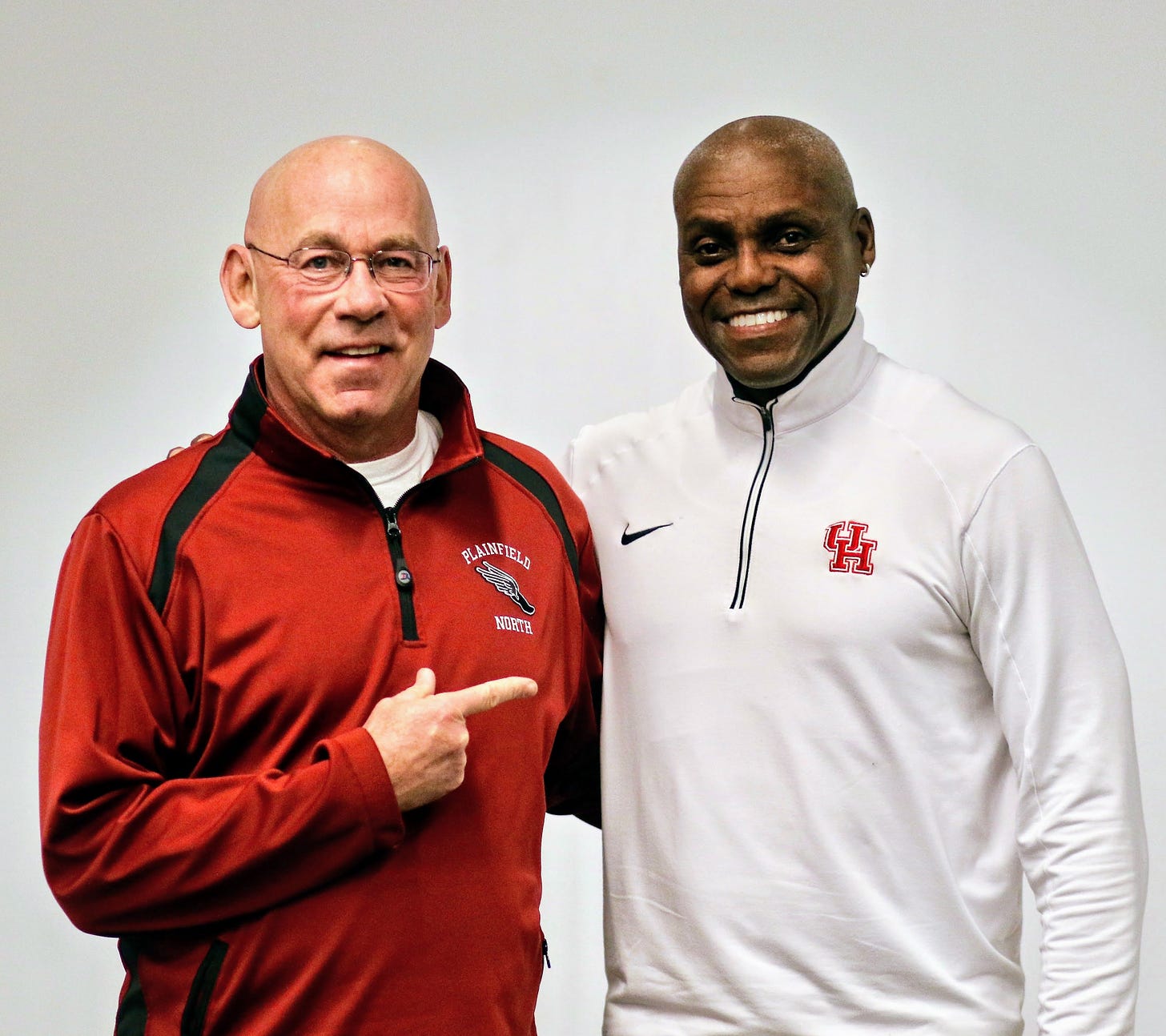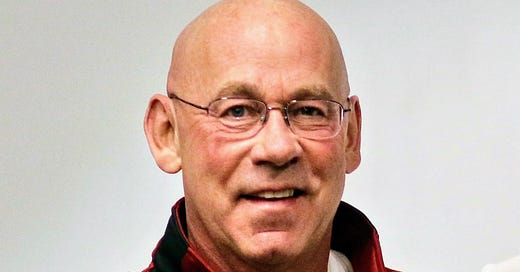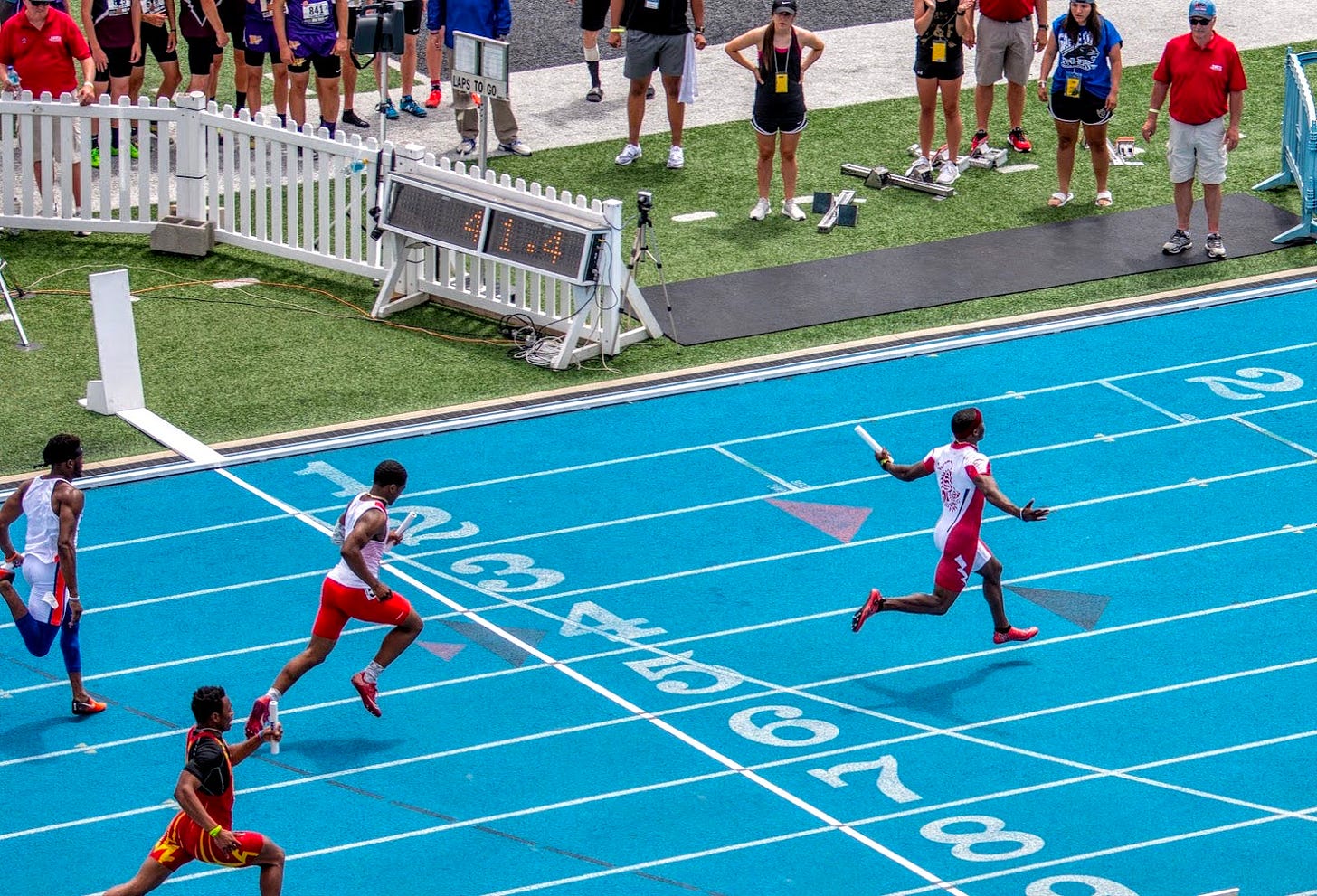❌ 10 Don'ts of Speed Training ❌ Coach Tony Holler
You know who he is: The Head Track Coach at PNHS - Illinois Hall of Fame Track Coach - Public Speaker - Retired Chemistry Teacher
I told you more guests were coming, and each one has the knowledge to help us think or coach in a new way!
I’ve been on this guest’s podcast (Jan 2022) and enjoyed every second of it. I’ve had the honor to speak about training, coaching, and everything in between. He’s in the Illinois Hall of Fame for a reason. You ready? I am!
Welcome Coach TONY HOLLER!👏👏👏
There is no sprint textbook. There is no absolute certainty when it comes to optimal sprint training. Like it or not, the training of a sprinter is experimental. If someone tells you they have the exact recipe, run away from them. Instead, learn to cook.
Even though great coaches will admit to uncertainty, they have a reliable confidence of WHAT DOESN’T WORK.
25 years ago, I decided that the #1 way to have a dominant high school track team was to make practice the best part of a kid’s day and attract my school’s best athletes (cats) to the track team. To do this, my sprinters stopped running. Huh? Yes, we focused our entire offseason on ATP-PC work, never doing glycolytic (lactate) training and never doing conventional aerobic work.
I decided the #1 way to have a dominant high school track team was to make practice the best part of a kid’s day and attract my school’s best athletes (cats) to the track team. - Coach Holler
In-season, we continue to chase speed but we add some “sprint further” work. Last year, we did nine lactate workouts in our 19-week season. In 2023, we were 1.04 seconds from making the Illinois 3A 4x4 finals. We have a chance to win the 4x4 this year. ⚡️All my sprinters are trained to run the 400. Everything from the 100 to the 400 is a sprint.⚡️
We don’t warm up, we don’t stretch, and we don’t cool down. We don’t do tempo work. We never sprint more than a 200 in practice and our workweek is only four days (three off days every week). We feed the cats. If this sounds blasphemous to you, stop reading now!
1. Don’t dismiss speed as genetic.
Sure, speed is genetic, but so is everything else. Strength is genetic but it can be improved. Speed is no different. Every coach I know was a hard worker as an athlete. The harder they worked, the slower they got. Their faulty conclusion… speed can’t be improved.
2. ⏱Don’t sprint without timing.⏱
“If you ain’t timin’, you ain’t sprintin’.” For the first nine years of Feed the Cats, I used a stopwatch and only timed 40s. I now use a Freelap timing system and can’t imagine coaching without it. Timing creates intent. Effort is always 100% when an athlete is being timed. Timing “gamifies'’ practice.
3. Don’t dismiss linear speed.
This point is mainly for the ball sports, but I’ve even heard track coaches argue against prioritizing max velocity. Max velocity is the tide that lifts all boats. Max velocity potentiates the weight room. Max velocity makes an athlete stronger, allowing them to jump higher and jump further, and improves their elasticity. The fastest athletes are the best accelerators. They are the best curve runners. They also change directions better than slow athletes.
4. Don’t forget to Record, Rank, and Publish.✏️
This is another way that we gamify practice. It’s like keeping score. Not recording practice times would be like playing poker without money. One of my go-to teaching points… “If you time stuff, you learn stuff.” lf you don’t Record, Rank, and Publish, you don't know where you’ve been and you don’t know where you’re going. You’re coaching in the dark.
5. Don’t speed train when tired.
Sprinting is a high-level skill. Never try to learn a high-level skill when physically or mentally fatigued. Tired is the enemy, not the goal. Imagine a pole vaulter or hurdler learning their craft in a state of fatigue. Only bad habits would be achieved. Speed is governed by the CNS and the CNS is sluggish when tired.
6. Don’t sprint for more than 5️⃣ seconds.
Five seconds is key because max velocity, the true ceiling of speed, can not be maintained for more than a few seconds. We do flys of 10, 20, 30, and 40 yards. The mph (average speed) is always highest for the 10 and declines with the 20, 30, and 40. If you want to raise the ceiling of speed, you won’t do it by sprinting 100s or 200s. (We sprint up to 200m, but that’s not speed work… long sprints are for acidosis tolerance and challenging glycolysis.)
7. Don’t view speed through a muscular lens.
Strength is good. My sprinters lift. But there’s nothing in the weight room that directly improves speed. Nothing. There’s no lift that fast people do well and slow people don’t. Nothing moves in the weight room at more than 2 mph. Sprinters move their entire body at 20-some mph. Stay general in the weight room, extreme in speed training, and specific in practice.
8. Don’t waste the off-season creating a big aerobic engine.
The coaches who read the sacred texts of S&C will tell you I’m crazy. They will tell you the aerobic engine will allow athletes to recover from anaerobic work. They will tell you aerobic conditioning is imperative for improving sprint capacity and speed endurance. You won’t find my stuff in textbooks, but we NEVER do anything considered aerobic. Like Brian Kula (Christain McCaffrey’s trainer), I believe we can get into reasonable aerobic shape by stacking anaerobic work. How do we improve sprint capacity? Sprints. How do we improve speed endurance? Lactate workouts.
9. 🥩Don’t burn the steak.🥩
Never let today ruin tomorrow. Accept small gains. Ever try to turn $100 into $1000 at the craps table? Don’t, you’ll go broke. Old school coaches burned the steak multiple times every week, then they wondered why their team had shin splints and no speed. The only time we burn the steak is when we have a track meet or a lactate workout. The full quote should be, “Never let today’s WORK ruin tomorrow’s WORK.” So, we always take the day off after a meet or a lactate workout. We call them “Sprint Holidays”.
10. Don’t treat your cats like dogs.🐱🐶
We want racehorses, not workhorses. Practice the disciplined pursuit of less. Prioritize happy and healthy sprinters. Cats appear lazy and they sleep 20 hours a day, but they become apex predators at the flip of a switch. Most coaches were grinders as athletes. Grinding’s definition says it well, “Reduce something to small particles or powder by crushing it.” Don’t crush your racehorses. The definition of “The Grind” is even worse… “hard dull work”. The grind is the antithesis to Feed the Cats.

🗓Tony Holler will be hosting a Feed the Cats Seminar in Irvine, CA, Feb 2-3.🗓 And you can find more from Coach Tony Holler on Instagram.





